Hoosier History Live is an independently produced new media project about Indiana history, integrating podcasts, website, newsletter, and social media, created and produced by Molly Head. Its original content comes initially from a live with call in weekly talk radio show hosted by author and historian Nelson Price. You can hear the show live Saturdays from noon to 1 pm ET. It’s over the air in Central Indiana at WICR 88.7 fm, or you can stream at the WICR HD1 app on your phone.
October 21, 2023
Naturalization ceremonies: a judge’s perspective
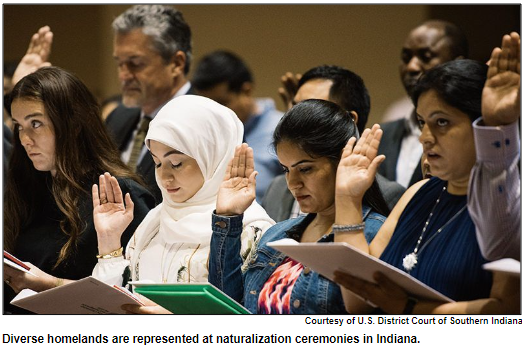
A rotating series on Hoosier History Live delves into the ethnic heritage of (and immigration to) Indiana. We have explored dozens of ethnic heritage groups, ranging from shows about Ukrainian immigration and Scottish heritage to the state's early Mexican heritage and the Arab heritage in Indianapolis. Many of the immigrants and refugees become U.S. citizens at naturalization ceremonies held at various venues.
 This time, we will explore the topic from a different perspective: that of a federal judge who oversees many of the naturalization ceremonies. Judge James Sweeney of the U.S. District for Southern Indiana will be Nelson's studio guest to share insights about an aspect of his job that he considers among the most rewarding: officially making Indiana residents new American citizens.
This time, we will explore the topic from a different perspective: that of a federal judge who oversees many of the naturalization ceremonies. Judge James Sweeney of the U.S. District for Southern Indiana will be Nelson's studio guest to share insights about an aspect of his job that he considers among the most rewarding: officially making Indiana residents new American citizens.
What has been the homeland for the most immigrants at Judge Sweeney's naturalization ceremonies since he began his stint on the federal bench in 2018? He plans to share the answer during our show, as well as offer other observations about naturalization ceremonies that he's overseen. (The U.S. District for Southern Indiana includes a wide swath of central and southern Indiana, stretching from the Indianapolis metro area, Kokomo, Terre Haute and Richmond to Evansville, Bloomington and New Albany.) According to court officials, 1,333 residents of the district have been naturalized as U.S. citizens so far in 2023, with a total of 1,850 projected by the end of the year. The number declined during the Covid pandemic, when naturalization ceremonies were unable to be held for a few months. (In 2020, only 925 residents of the district were naturalized, compared to 2,286 in 2018.)
 Venues for the naturalization ceremonies have ranged from the Indiana State Museum and Union Station in Indianapolis to the Benjamin Harrison Presidential Site, the Indianapolis Motor Speedway and the Palladium in Carmel. Judge Sweeney isn't the only federal judge in the district who oversees naturalization ceremonies. Judge Sarah Evans Barker is among the others; she was a Hoosier History Live guest in 2014 in connection with her trail-blazing role as the first woman federal judge in Indiana. Judge Sweeney was confirmed as a federal judge by the U.S. Senate in 2018 after Judge Barker had assumed a "senior status", meaning a reduced caseload.
Venues for the naturalization ceremonies have ranged from the Indiana State Museum and Union Station in Indianapolis to the Benjamin Harrison Presidential Site, the Indianapolis Motor Speedway and the Palladium in Carmel. Judge Sweeney isn't the only federal judge in the district who oversees naturalization ceremonies. Judge Sarah Evans Barker is among the others; she was a Hoosier History Live guest in 2014 in connection with her trail-blazing role as the first woman federal judge in Indiana. Judge Sweeney was confirmed as a federal judge by the U.S. Senate in 2018 after Judge Barker had assumed a "senior status", meaning a reduced caseload.
Before becoming a federal judge, James Sweeney was a partner with the Indianapolis law firm of Barnes & Thornburg; before that, he was a colonel in the Marine Corps and a combat veteran. An Indianapolis native, he graduated from the U.S. Naval Academy and has represented clients in military forums. In addition to sharing insights about naturalization ceremonies during our show, including what the test to become a citizen is like and how long the process can take, Judge Sweeny also is expected to discuss civic education.
In addition to Judge Sweeney and Judge Barker, other distinguished judges also have been Hoosier History Live guests. Randy Shepard, the former chief justice of the Indiana Supreme Court, was a guest in 2019 on a show about historic perseveration, one of his primary interests.
"Hoosier History Live is a bright spot in my media constellation. I also frequently forward your weekly enewsletters to friends around the globe. I may now be a Californian, but my Hoosier interest is endless. The podcasts and streaming are good tools. By all means, persevere!"
- Tom Cochrun, former news anchor, WTHR-TV Channel 13 Indianapolis

Your contributions help keep Hoosier History Live on the air, on the web and in your inbox!


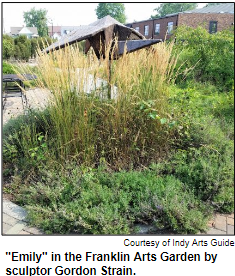 This Saturday Chris will take us to two adjacent small public spaces in Franklin, just south of the Johnson County Courthouse along Young's Creek. The first is the lovely
This Saturday Chris will take us to two adjacent small public spaces in Franklin, just south of the Johnson County Courthouse along Young's Creek. The first is the lovely 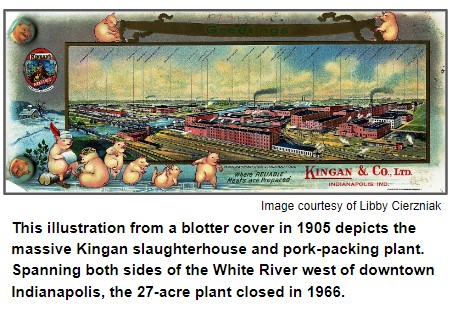
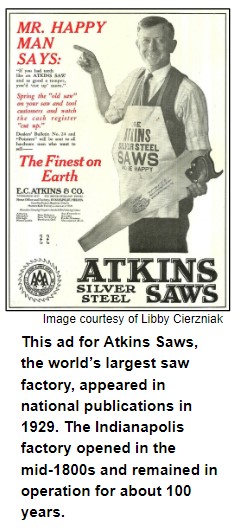 Time to listen to a fun and creepy show from our Archives! Listen to the show podcast
Time to listen to a fun and creepy show from our Archives! Listen to the show podcast 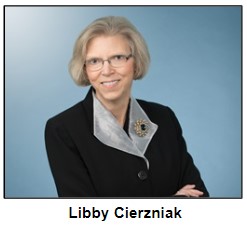 With the multiple slaughterhouses and pork-packing businesses, the king of the heap for about 100 years was unquestionably
With the multiple slaughterhouses and pork-packing businesses, the king of the heap for about 100 years was unquestionably 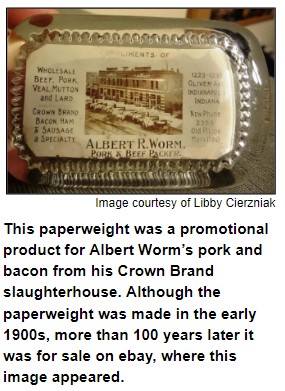 Kingan's opened in 1863, eventually became the largest pork house in the world and finally shut down in 1966. It's been blamed by environmentalists for decades of pollution in White River, even while being innovative in the industry. During the 1920s, according to Libby's article, Kingan's "became the first meatpacker to sell sliced bacon".
Kingan's opened in 1863, eventually became the largest pork house in the world and finally shut down in 1966. It's been blamed by environmentalists for decades of pollution in White River, even while being innovative in the industry. During the 1920s, according to Libby's article, Kingan's "became the first meatpacker to sell sliced bacon".
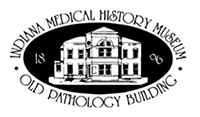


 At the top of our newsletter and website we put notice, and links, to our newly published podcasts. We also provide a link to
At the top of our newsletter and website we put notice, and links, to our newly published podcasts. We also provide a link to 

